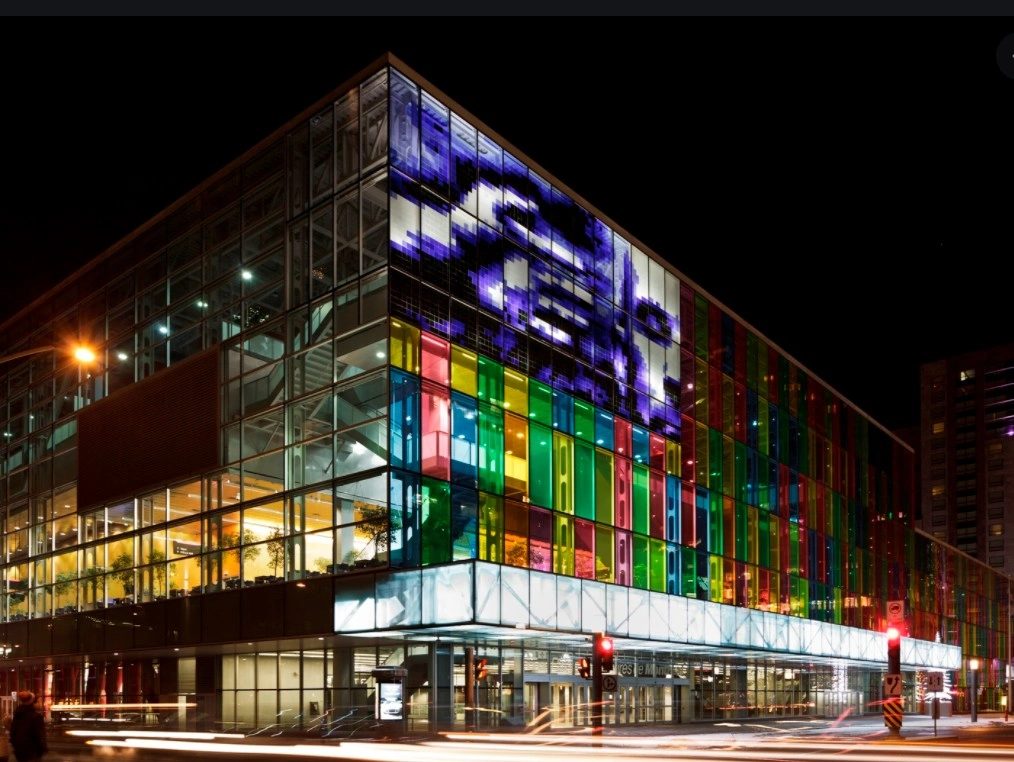In North America, glass walls and partitions have become important parts of modern architecture. They used to be a luxury just for corporate headquarters and cutting-edge offices, but now they are an important part of how workplaces, businesses, and even schools are designed. The transformation shows how our ideas about space, working together, being open, and being environmentally friendly will change in 2025.
These architectural features strike a compromise between openness and seclusion, letting businesses make the most of natural light while still making interiors that are useful and flexible. Glass walls and barriers today do more than just look good. They change the experience of employees, make buildings more energy-efficient, and send a message of modernity and trust. This is because hybrid work models are becoming more popular, and people are paying more attention to health and sustainability.
This guide provides an in-depth overview of why glass partitions are gaining traction, the types available, acoustic and safety considerations, design trends shaping the North American market, and practical recommendations for architects, designers, and facility managers.

Why Choose Glass Walls & Partitions?
There are psychological, aesthetic, and functional reasons behind the growing popularity of glass in commercial and office spaces. In the workplace, glass offers advantages that drywall, wood, or modular metal solutions cannot match.
Making the Most of Natural Light
Natural light is one of the best elements for employee health and productivity. Glass walls let daylight reach deeper inside buildings, which reduces the need for artificial lighting. Research from North America shows that employees who have access to natural light feel more satisfied, less stressed, and more focused.
Creating More Openness and Space
Spaces feel larger and more open when transparency is involved. Glass walls make even small offices feel less confined compared to opaque walls. After the pandemic, this open and airy feeling has become a major priority in office architecture.
Design Versatility
Glass is naturally flexible. It can be transparent, frosted, textured, tinted, engraved, or even modular. Thanks to this versatility, partitions can range from sleek frameless systems to custom engraved panels that strengthen a company’s brand identity.
The Distinct Advantage of Textured Glass
Unlike the clear glass used in most glazing, our textured glass creates an unmatched visual depth and completely transforms the way light moves through a space. The exclusive ThinkGlass textures maintain privacy while allowing brightness to flow, and they also become a true architectural feature. They add character, movement, and an artistic dimension that instantly elevates any standard space into a premium one. This sculptural effect turns glass into much more than a functional material. It becomes a visual signature.
Control of Sound
Modern glass walls are more than just pretty. Laminated acoustic glass, along with specialized frames and seals, can block sound well enough to let people have meetings in open spaces without sacrificing privacy.
Easy to Take Care Of
Glass is clean and easy to clean, unlike surfaces that are porous. This is important not only in offices, but also in healthcare, hospitality, and education, where cleanliness and durability are important.
In summary, glass walls and partitions provide:
- A healthier, brighter environment through daylight access.
- A perception of openness that enhances employee morale.
- Customizable finishes for branding and design cohesion.
- Acoustic control that balances collaboration with privacy.
- Hygiene, durability, and easy cleaning for high-traffic spaces.
Types of Glass Walls & Partitions
Glass partition systems come in many forms, each with different strengths and ideal applications.
Framed Glass Partitions
These systems use aluminum, wood, or steel frames to provide structure around glass panels. They are cost-effective, durable, and highly customizable in terms of frame finishes. Framed systems are often specified for offices needing flexibility and budget control while maintaining an elegant look.
- Applications: General office partitions, meeting rooms, corridors.
- Advantages: Affordable, adaptable, available in various finishes.
- Considerations: Visible frames interrupt visual continuity compared to frameless options.
Frameless Glass Walls
Frameless systems use minimal hardware, which makes glass surfaces that are smooth and seamless. They look great and fit in with modern, minimalist styles. Frameless designs also let in the most light, which is why they are popular in high-end interiors and executive offices.
- Applications: Executive suites, creative agencies, high-profile offices.
- Advantages: Sleek, modern, high-end appearance.
- Considerations: Higher cost, requires precise installation.
Operable & Sliding Glass Partitions
Movable systems allow spaces to be reconfigured on demand. Panels slide, fold, or pivot, creating flexibility for companies that need to adapt space to different activities.
- Applications: Conference rooms, training areas, multipurpose spaces.
- Advantages: Flexibility, space efficiency, adaptable layouts.
- Considerations: Lower acoustic insulation compared to fixed partitions.
Frosted & Patterned Glass
Frosted or etched panels provide privacy without blocking natural light. Patterns can be purely decorative or functional, such as geometric motifs, gradient frosts, or branded logos.
- Applications: Meeting rooms, semi-private offices, creative spaces.
- Advantages: Balances privacy with light, supports branding.
- Considerations: Less visual transparency.
Smart Glass (Switchable)
Smart or electrochromic glass transitions from clear to opaque at the touch of a button. It is increasingly popular in 2025, particularly in high-tech offices that value privacy and innovation.
- Applications: Executive boardrooms, healthcare facilities, confidential spaces.
- Advantages: On-demand privacy, futuristic feel, energy efficiency.
- Considerations: High upfront cost, requires integration with building systems.
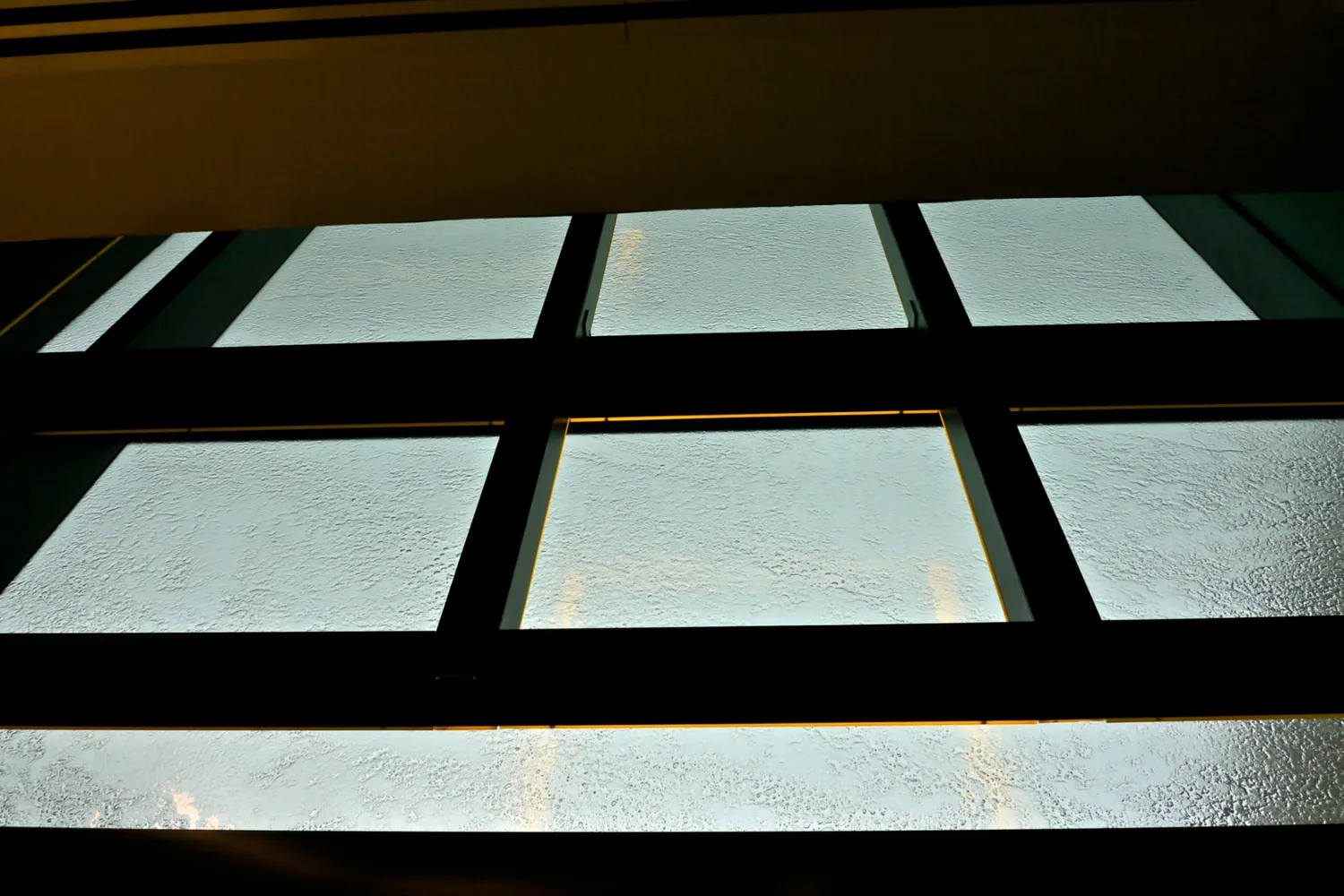
Acoustic Performance & Privacy
One of the most common misconceptions is that glass walls cannot provide privacy. In fact, acoustic laminated glass combined with specialized seals achieves impressive sound insulation.
- Noise Reduction: Laminated acoustic partitions can reduce sound transmission by 28-36 dB, sufficient for confidential conversations.
- Complementary Solutions: Adding acoustic ceiling panels, carpets, or curtains enhances performance in open-plan offices.
- Privacy Films: Etched or frosted designs increase visual privacy while maintaining translucency.
For law firms, financial institutions, and medical offices, acoustic glass partitions provide both transparency and confidentiality.
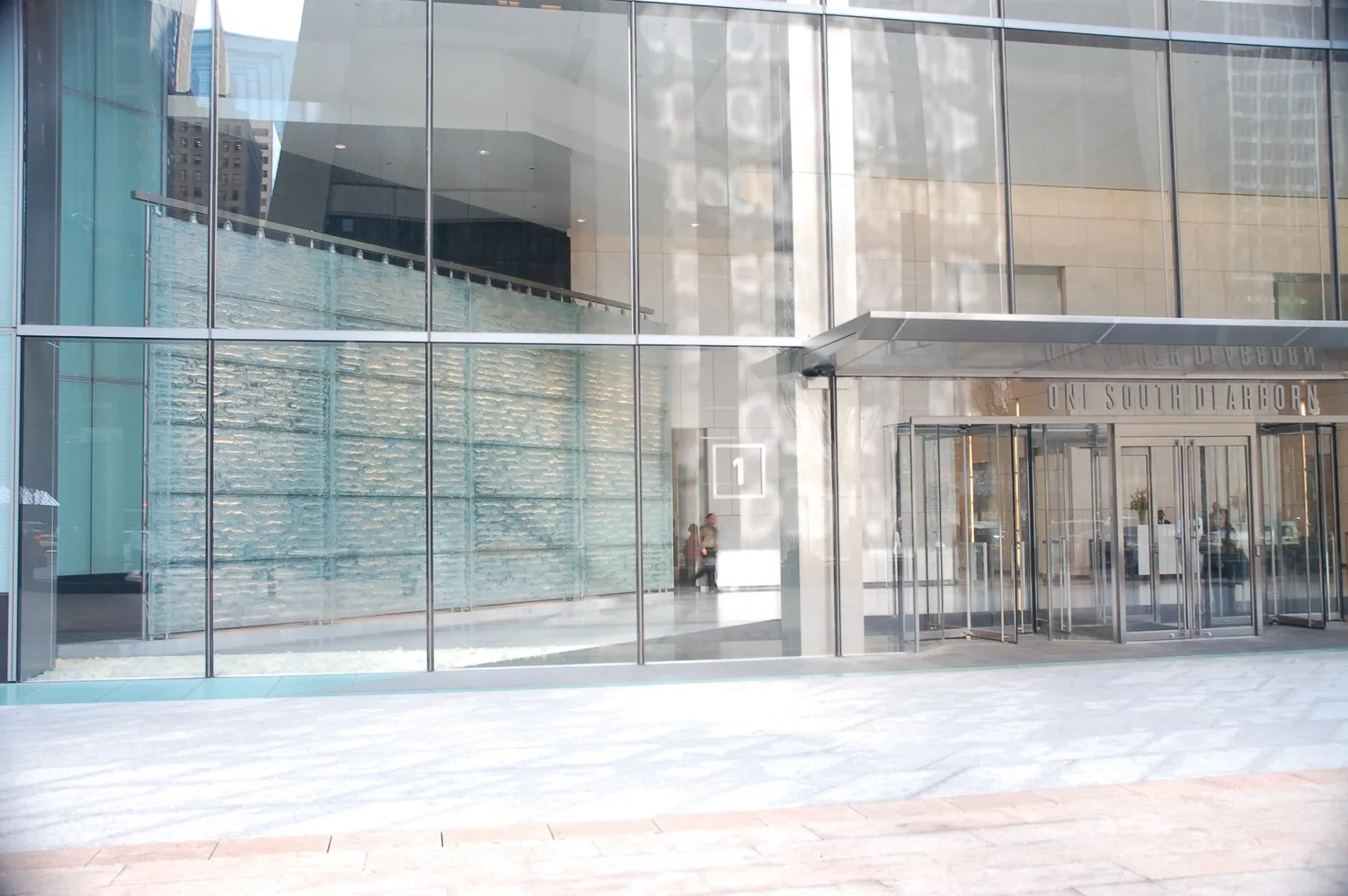
Safety & Compliance in North America
Safety standards are essential when specifying glass in commercial environments.
- IBC (International Building Code): Requires tempered or laminated glass for partitions in occupied buildings.
- ANSI and CSA Standards: Define impact resistance, load-bearing capacity, and fire performance.
- Tempered vs. Laminated: Tempered glass shatters into blunt fragments; laminated glass holds together even when broken. Both are widely approved for office partitions.
- Edge Finishing: Polished or rounded edges reduce injury risk in high-traffic corridors.
- Fire Ratings: Fire-resistant glass partitions are available for areas requiring compartmentalization under local codes.
Compliance is not optional-proper specification ensures not only safety but also insurance and liability coverage.
Design Trends in 2025
North American workplaces continue to evolve, and glass partitions are at the forefront of design trends.
- Minimalist Frames: Matte black, brushed gold, and bronze frames dominate in corporate interiors, combining industrial chic with warmth.
- Branded Privacy: Custom frosting with geometric patterns, gradients, or logos is increasingly used to add style and reinforce corporate identity.
- Hybrid Work Adaptability: Operable walls support hybrid layouts, enabling quick conversion from collaborative to private setups.
- Sustainable Materials: Recycled glass and LEED-certified systems are increasingly requested by environmentally conscious companies.
- Technology Integration: Smart glass that syncs with building management systems, lighting, and HVAC is entering mainstream adoption.
These trends show that glass is no longer a static material but an adaptive, dynamic architectural feature.
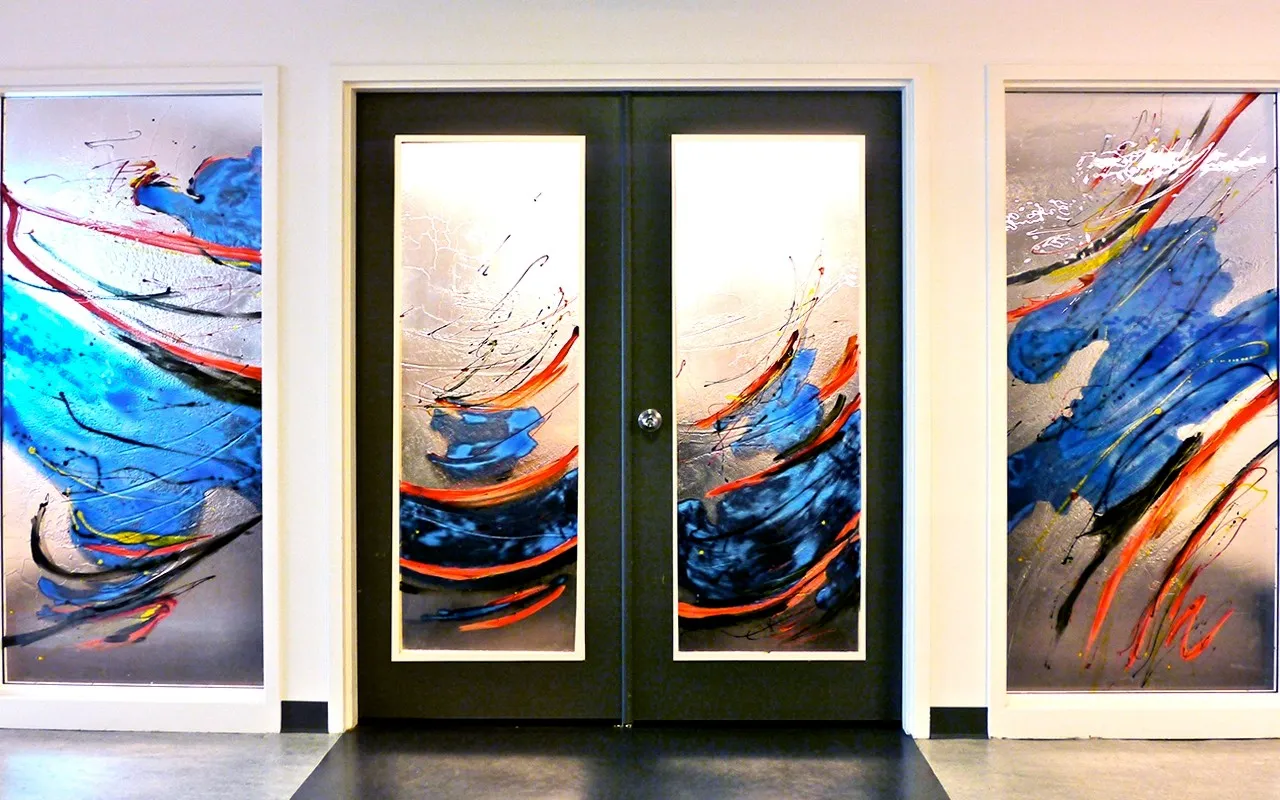
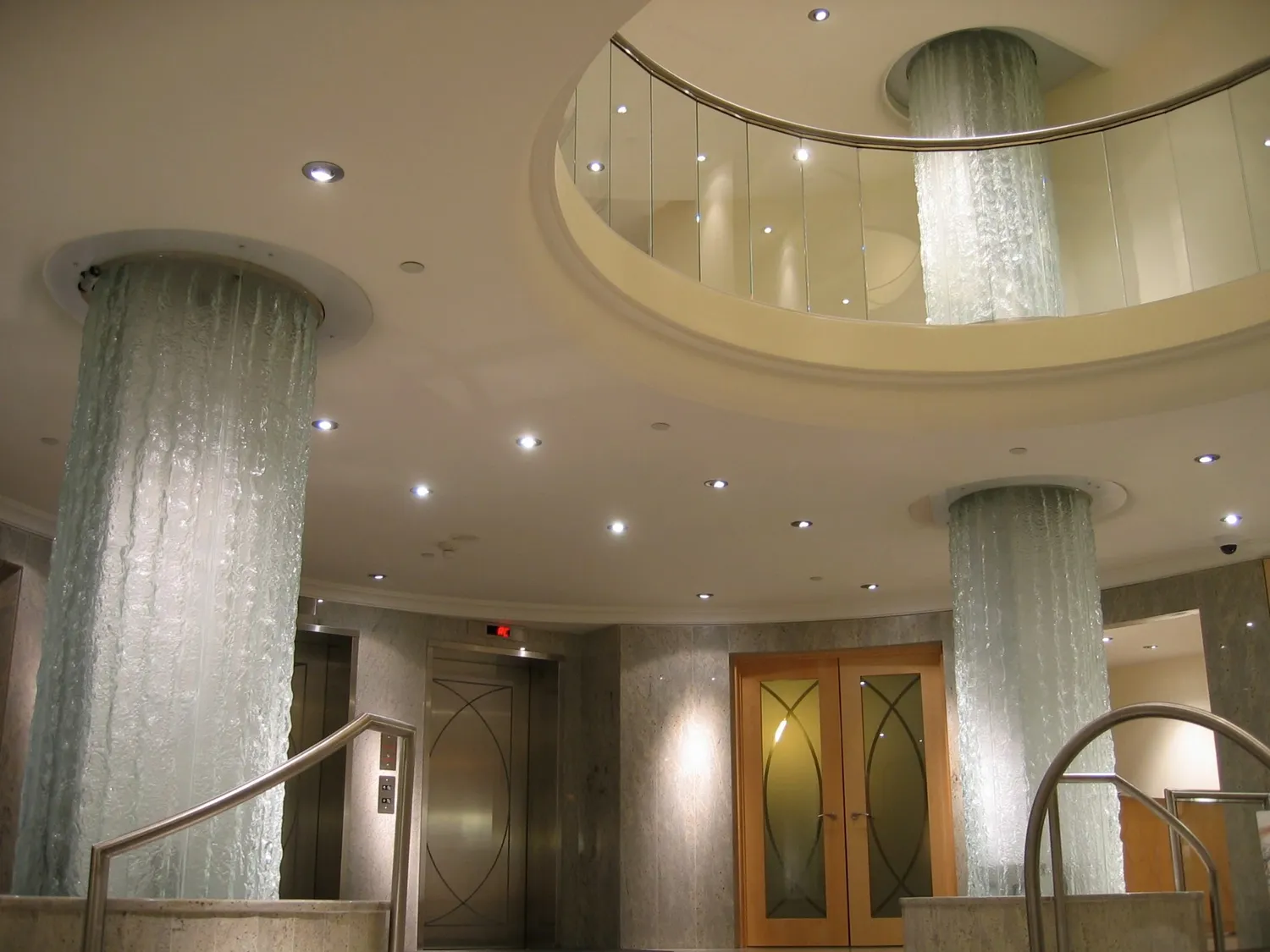

Benefits and Challenges
Practical Recommendations
For architects and decision-makers, specifying glass partitions requires balancing aesthetics, performance, and budget. Key steps include:
- Define Priorities: Is acoustic privacy or transparency more important? Identify the primary driver.
- Specify Safety Glass: Always choose tempered or laminated products that comply with IBC, ANSI, and CSA standards.
- Plan for Acoustics: Integrate seals, acoustic interlayers, and complementary materials early in the design process.
- Explore Smart Options: For executive suites or hybrid spaces, consider switchable glass for flexibility.
- Work with Reputable Fabricators: Ensure the provider has proven experience with commercial installations.
Glass walls and partitions have changed modern North American offices by making them more open and private, more stylish and functional, and more stylish and functional. In 2025, they are more than just parts of buildings; they are instruments that change how people work, interact together, and experience their surroundings.
Glass partitions are a future-proof choice for commercial and office design because they let in the most natural light, make spaces look bigger, keep people safe, and allow for customisation. The next generation of glass walls will continue to shape modern homes as sustainability and technology become more important.

How does ThinkGlass improve privacy without blocking natural light?
ThinkGlass panels use custom textures and patterns that obscure visibility while allowing light to pass through. This makes it perfect for conference rooms, lobbies, or open-plan offices where you want a bright, airy feel without sacrificing privacy.
What are the benefits of installing glass walls in modern North American offices?
Glass walls from ThinkGlass create open, light-filled environments while maintaining acoustic privacy. They enhance aesthetics, allow natural light to flow, and make office spaces feel larger and more inviting—perfect for contemporary commercial design in 2025.
How do ThinkGlass partitions differ from traditional drywall or cubicles?
Unlike drywall or standard cubicles, ThinkGlass partitions are sleek, customizable, and visually striking. They combine functionality with design, offering privacy, sound control, and easy maintenance while elevating the overall look of office or retail spaces.




